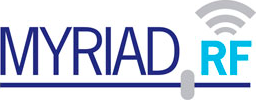Hello there, ![]()
I am working on setting up a LimeSDR Mini to experiment with receiving and analyzing 4G LTE signals. I have been following the basics from online documentation; but I am running into some challenges with both signal acquisition and configuration consistency.
LimeSDR Mini connected to a USB 3.0 port, LimeSuite, SDRangel, and gqrx for testing
A pair of wideband antennas, tuned for LTE frequencies 700–2600 MHz range
My primary goal is to capture a reliable downlink signal on a nearby LTE band e.g., Band 3 at 1800 MHz; visualize the spectrum, and confirm decoding or signal integrity.
Even after setting the correct frequency and gain, the signal seems very faint; and I often cannot get consistent spectrum visualization. Are there specific LimeSuite settings for RX gain; LNA; and TIA that you recommend for LTE? ![]()
I have noticed some drift or inconsistencies in tuning. I am unsure whether this is related to calibration settings or the temperature of the device. Is there a particular way to ensure the LimeSDR stays tuned reliably over time?
Also, I have gone through this post; https://discourse.myriadrf.org/t/how-can-i-make-a-lte-4g-base-station-bacisly-with-limesdr-mini-cybersecurity which definitely helped me out a lot.
Are there any tools or scripts you suggest for isolating specific LTE channels or decoding them efficiently with SDRangel or other software? ![]()
Thanks in advance for your help and assistance. ![]()
